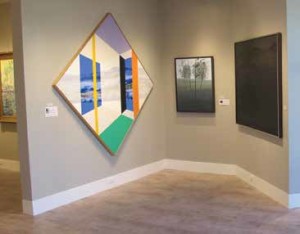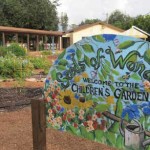Ask The Artspert – April 2015
Dear Artspert:
Why do art museums and galleries even exist anymore when I can just open a book or better yet, go online to look at paintings? What’s the difference in seeing a painting on my iPad versus seeing one hanging in a gallery?
Signed,
iPainting
Dear iPainting,
Technology certainly has come a long way with high definition digital photography and the speed and capacity of internet bandwidth. The internet has proven to be a wonderful tool for sharing information – including pictures of paintings – seemingly instantly, across the globe from anywhere to anywhere in the world. We have had a website with images of our artists’ paintings online for nearly fifteen years now and Juliana posts online exhibitions – digital versions of our solo or special exhibitions at Harmon-Meek Gallery. Having images of paintings on our website is a helpful tool, as is the printed exhibition catalog or show folder, for illustrating selections from the exhibition to those not able to be here personally to see the works. But it’s not the same as seeing a painting in person.

THE PAINTING ON THE RIGHT IS A BLACK-ON-BLACK PAINTING BY JIMMY ERNST DEPICTING THE FLORIDA EVERGLADES. IN-PERSON YOU CAN SEE THE SAWGRASS MEADOWS AGAINST THE FLAT FLORIDA HORIZON, BUT IN THIS PICTURE ALL YOU SEE IS A BLACK SQUARE. THE PAINTING CAN BE SEEN AT HARMON-MEEK|MODERN, 382 12TH AVE S IN OLD NAPLES.
The past two summers, we have invited the summer middle school students from Grace Place for Children & Families to come to the gallery for a special exhibition just for them. While we display a variety of paintings and sculpture by various artists in various mediums, we always include a Hunt Slonem painting so that Juliana may show the students the difference between seeing a painting in person and seeing a painting on a computer. Often Slonem’s paintings incorporate a technique he developed of layering oil paint and then pulling the paint across the canvas in various repeated motions. It is this texture he creates that is nearly impossible to properly perceive from a photograph (whether in a book or on a computer).
Obviously, you also lose a sense of scale when you see only a photograph and not the actual work – how big is the painting?
Confronted with this very issue of books reproducing paintings with better color and detail, Jimmy Ernst began creating a series of blackon-black and white-on-white paintings in the 1950s that could not easily be photographed or reproduced. The son of internationally acclaimed artists, Max Ernst, Jimmy Ernst (1920-84) became a famous abstract artist of the New York School of Abstract Expressionism and part of the Irascible Eighteen (a group of abstract painters who in 1950 protested the Metropolitan Museum of Art’s lack of including abstract American art – the group included de Kooning, Gottlieb, and Rothko).
Throughout his career Jimmy Ernst would occasionally create a black-on-black or white-on-white painting using his technique of
alternating between applying gloss and flat paint to the canvas. To answer questions from art critics, historians, and the public as to why he did these paintings he said that it was to force people to see the works in person because it is only in person that you can really appreciate the subject matter of the work.
Sincerely,
The Artsperts
SEEING ART IN PERSON




Leave a Reply
Want to join the discussion?Feel free to contribute!